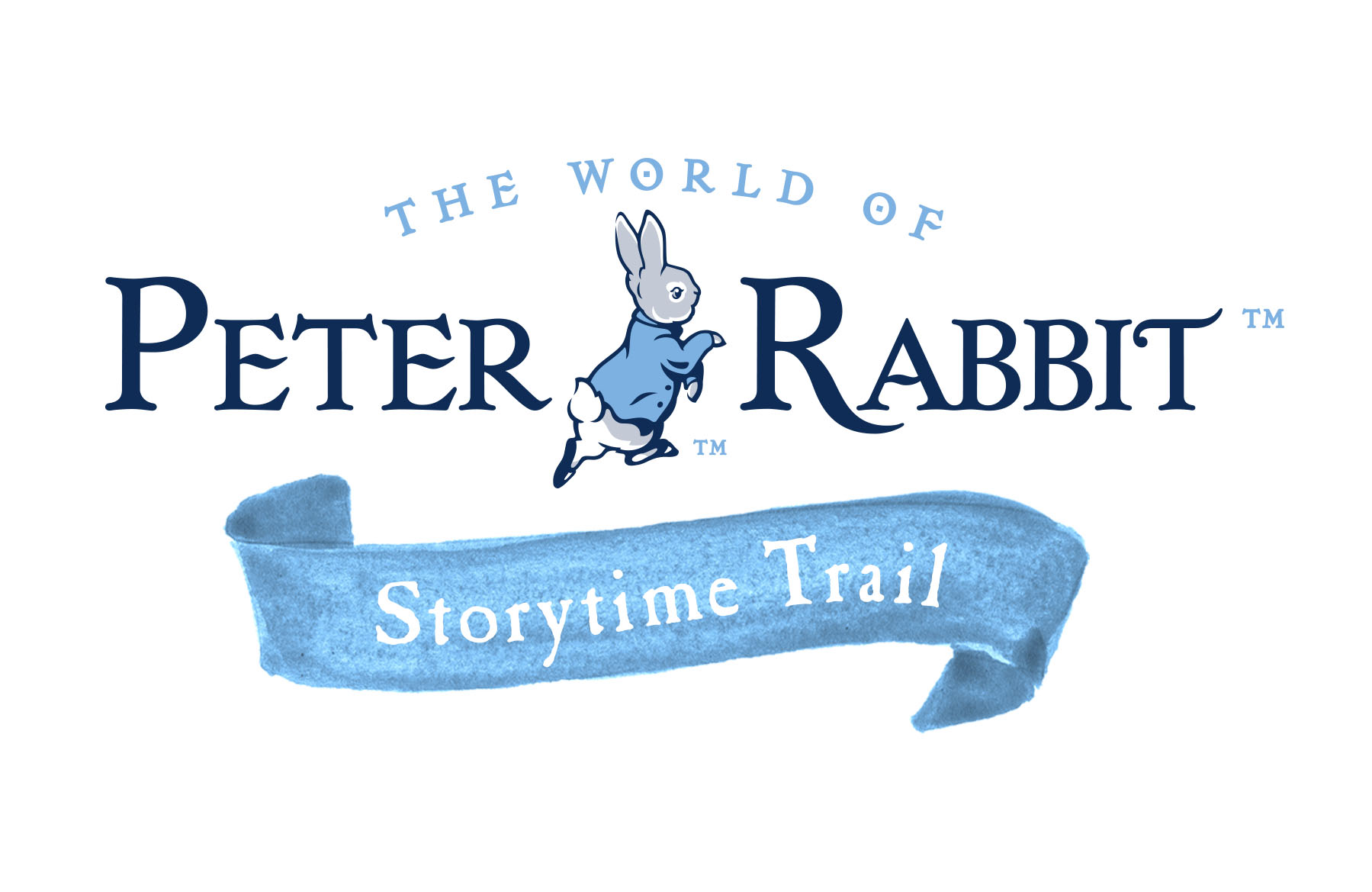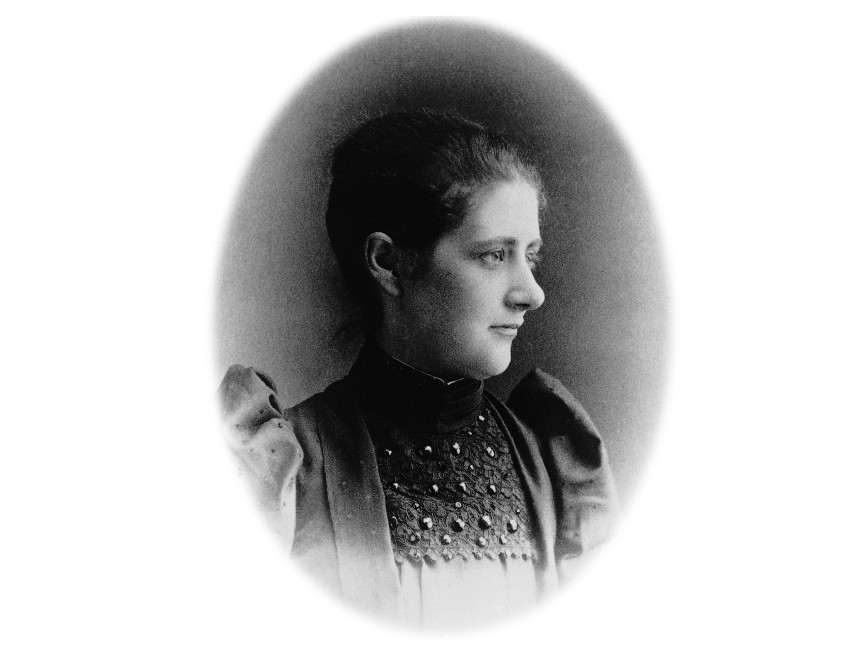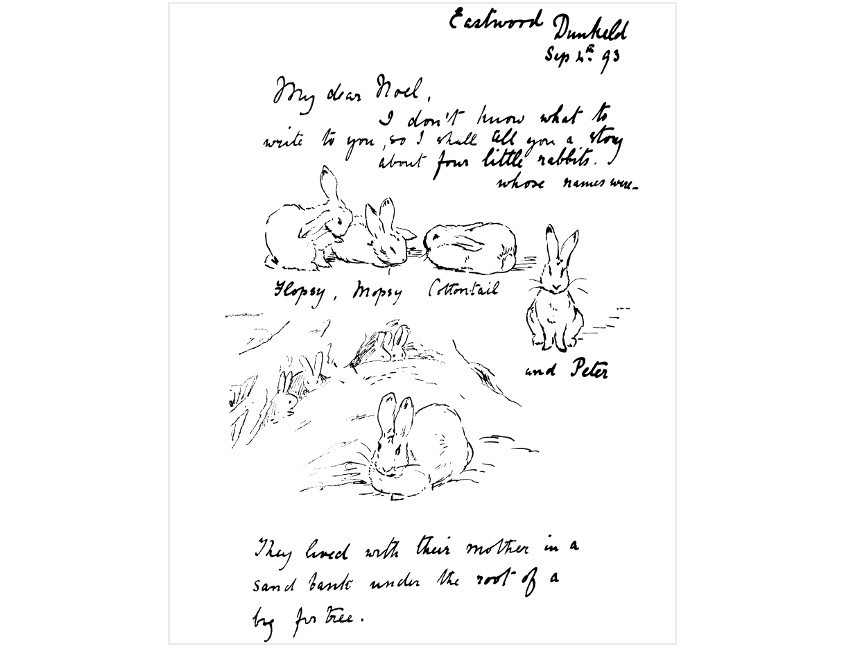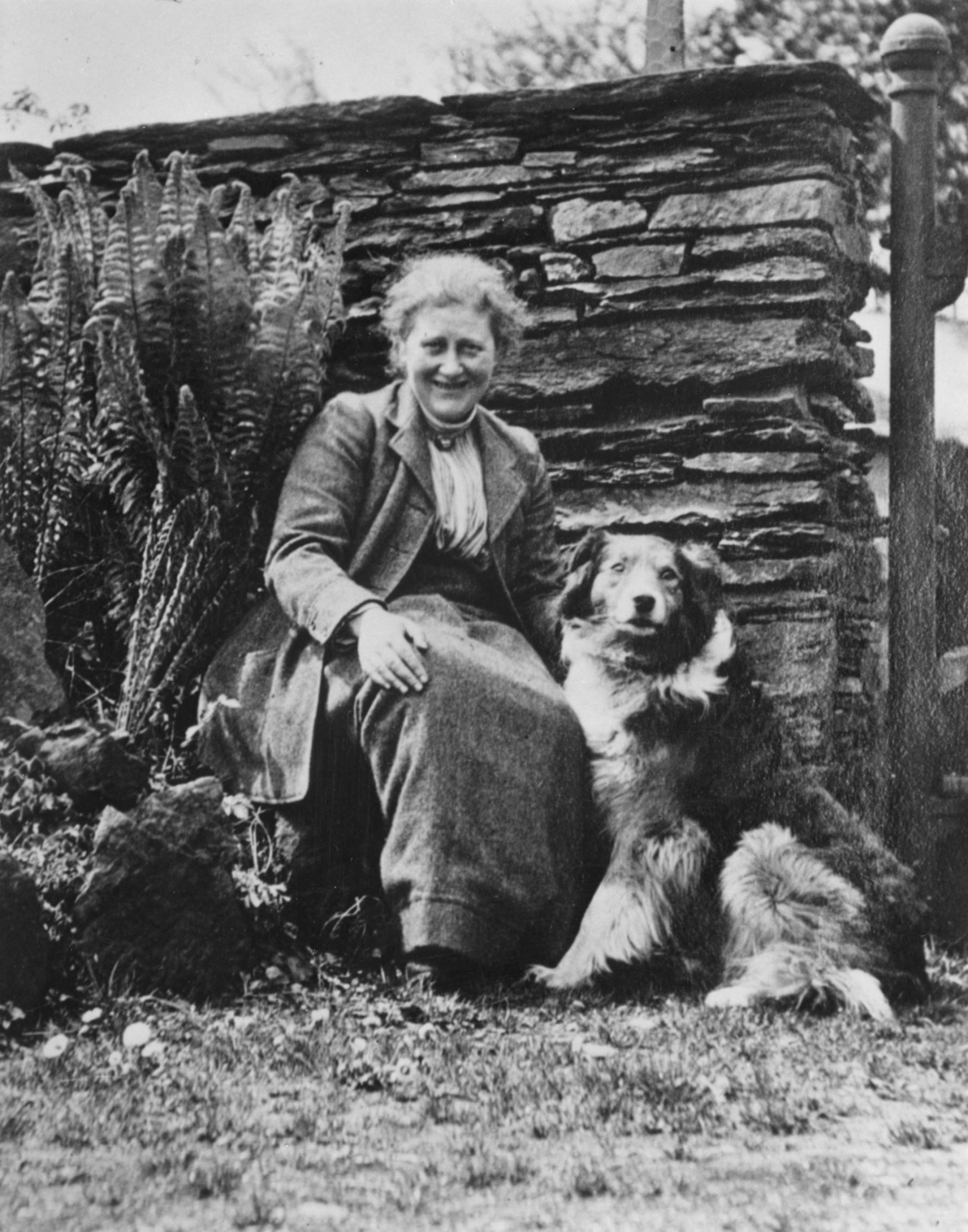
Welcome to The World of Peter Rabbit
Beatrix Potter is best known as the author and illustrator of her series of twenty-three bestselling children’s books, including The Tale of Peter Rabbit.
What is often unknown is that she was also an accomplished naturalist, a businesswoman, and later in life became a farmer and committed environmentalist.

Beatrix Potter (1866 – 1943)
Beatrix Potter was born into a typical middle-class Victorian family in Kensington, London. Her father, Rupert, was a talented amateur photographer, while her mother, Helen, enjoyed painting landscapes in watercolour. Bertram Potter, her brother, was born in 1872 and became a great companion to Beatrix.
Beatrix did not go to school, but was educated at home by a governess. She spent most of the day alone in her schoolroom, which gave her plenty of time for her favourite pastime, drawing and painting. Her father encouraged her by taking her to art galleries, museums and auction houses where she studied the items on display.
Every year the Potter family would go on long summer holidays. Whilst away, Beatrix and Bertram would collect and study natural history specimens. Beatrix looked closely at the things she drew and noticed the smallest details. At the age of 21, Beatrix began her serious work, a scientific study of fungus.

The Tale of Peter Rabbit
Many of Beatrix Potter’s stories started life as picture letters written to the children of her family and friends. Often the characters in them were real animals that she kept as pets – including rabbits called Peter Piper and Benjamin Bouncer, a hedgehog named Mrs. Tiggy, and Punch the frog.
The Tale of Peter Rabbit, Beatrix Potter’s first little book, began life as a letter to Noel Moore, written in 1893.
Some years later, Beatrix borrowed back the letter and worked up a plan to publish the story as a book. After her first attempts to find a publisher were unsuccessful, she decided to publish it herself.
The privately printed edition was a great success and an introduction from family friend Canon Hardwicke Rawnsley finally resulted in an offer from publishers Frederick Warne & Co.
Beatrix Potter wrote twenty-three little books in total, all of which were published by Frederick Warne & Co. between 1902 and 1930.

Beatrix Potter’s first little book, The Tale of Peter Rabbit, was an immediate success, and Warne sold around 46,000 copies in the first twelve months. Beatrix and Warne soon began to work together to produce more little books.
Beatrix was closely involved in the publication of her books, and had strong ideas on presentation, from the quality of the colour printing to the size and price of the finished book.
The other twenty-two little books were equally successful. Their fame of them soon spread overseas, and demand grew for editions of the little books in foreign languages. Today, the little books are available in languages around the world.
Realising the wider appeal of her characters, Beatrix initiated the development of related merchandise. In 1903 she designed the first Peter Rabbit soft toy and patented the design. Warne soon realised the potential of selling products linked to the little books, and worked with her to develop a programme of merchandise. As she did with her books, Beatrix took an active interest in all creative and commercial details.
The Tale of Peter Rabbit is not actually set in the Lake District. When drawing the illustrations for the story, Beatrix took inspiration from a number of places that she had visited.
Here she explains in her own words:
Peter was so composite and scattered in locality that I have found it troublesome to explain its various sources. If the vegetable garden & wicket gate were anywhere it was at Lingholme near Keswick; but it would be vain to look for it there, as a firm of landscape gardeners did away with it … The lily pond in Peter was at Tenby, S. Wales. The fir tree & some wood backgrounds were near Keswick. Mr. McGregor was no special person; unless in the rheumatic method of planting cabbages. I remember seeing a gardener in Berwickshire extended full length on his stomach weeding a carriage drive with a knife. His name I forget – not McGregor! I think the story was made up in Scotland… Peter Rabbit’s potting shed and the actual geraniums were in Hertfordshire - but what does it matter?
Beatrix Potter, in a letter to Arthur Stephens, 20th February 1942

From 1905, Beatrix Potter began to spend more time in the English Lake District at her new home of Hill Top Farm in the village of Near Sawrey. Already established as a successful children’s author, she continued to write and illustrate new books for many years.
In 1913 Beatrix married local solicitor, William Heelis. She became “Mrs Heelis”, and few people knew of her identity as Beatrix Potter, creator of the Peter Rabbit Books.
As time passed, Beatrix devoted more and more time to her farming, promoting traditional methods to preserve the environment and natural world around her.
Beatrix Potter's close friend Canon Hardwicke Rawnsley co-founded The National Trust in 1895, to act as a guardian for the nation in the protection of threatened countryside and buildings. Beatrix worked alongside the Trust to manage and acquire land in the Lake District. On her death in 1943 she bequeathed 4,000 acres of land to them.